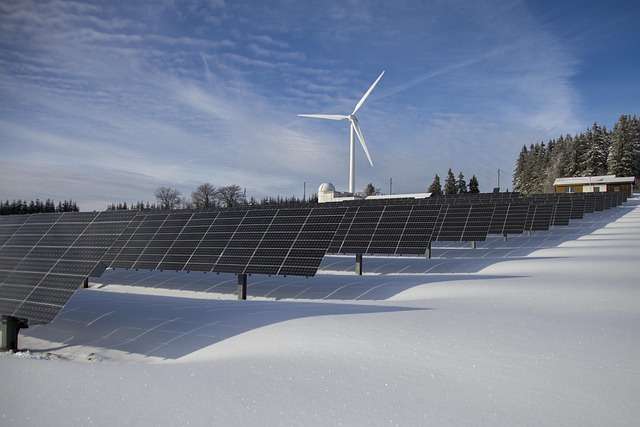The world of renewable energy is exploding with opportunities, but not all of them are as obvious as solar farms blanketing the Mojave or wind turbines dotting the Midwest.
The real money? It’s flowing into the places most investors aren’t even looking.
If you think the biggest fortunes in energy are made by slapping panels on rooftops, buckle up. This is where the smart money is heading in 2025.
The Rise of Energy Storage and Virtual Power Plants
Everyone talks about solar, but few realize that without a way to store all that sunshine, much of it is wasted. Enter grid-scale batteries. The U.S. added about 7.4 GW of battery storage in 2024, a 64% jump from the previous year, making it the fastest-growing segment in renewables. And it’s not stopping.
The biggest players, from Tesla’s Megapacks to Fluence’s AI-optimized storage systems, are making battery storage the next frontier. In California, the Moss Landing battery system, owned by Vistra Energy, has already become one of the world’s largest, storing excess solar energy during the day and dispatching it at night when demand spikes.
Meanwhile, China is aggressively expanding its own storage capacity, which could have long-term impacts on pricing and supply chains for lithium-ion and alternative battery chemistries.
Then there’s virtual power plants (VPPs). This one’s flying under the radar, but it’s going to reshape the energy grid. Picture this: thousands of homes with rooftop solar and Tesla Powerwalls, all linked together into a single power source that utilities can tap into like a traditional power plant. It’s happening right now.
In 2024, California approved VPPs to participate in grid operations, which led to a surge in home battery adoption. Companies like Sunrun, Tesla, and Enphase are leading the charge, partnering with utilities to create decentralized power networks that reduce the need for costly infrastructure.
In Australia, one of the world’s largest VPPs, run by AGL Energy, is proving the model works by aggregating excess energy from over 1,000 households and selling it back to the grid.
Hydrogen: The Next Clean Energy Boom
For those looking even further ahead, there’s the hydrogen revolution. Green hydrogen, produced using renewable energy, has been a pipe dream for years—too expensive, too inefficient.
But thanks to Biden’s Inflation Reduction Act, which is dishing out tax credits of up to $3 per kilogram for green hydrogen, the economics are changing fast.
ExxonMobil, of all companies, is getting in on the action, securing land in Texas for what could be one of the largest green hydrogen hubs in the country. Meanwhile, European energy giants like BP and Shell are investing billions in offshore wind-powered hydrogen production.
In the U.S., Plug Power, a company that once struggled to commercialize hydrogen fuel cells, is now developing a $1 billion green hydrogen plant in New York, betting that industries like steelmaking and heavy transport will pivot to hydrogen to cut emissions.
If even a fraction of these projects succeed, hydrogen could become a trillion-dollar market within the next decade.
Agrivoltaics and the New Energy Supply Chain
Then we have agrivoltaics, another overlooked goldmine. This is the practice of integrating solar farms with agriculture, allowing crops and panels to coexist. Farmers make extra income leasing land to solar developers while keeping their fields productive.
Pilot projects in Colorado, Arizona, and France have shown that partial shading from solar panels can actually boost crop yields by up to 10% while reducing water evaporation. The U.S. Department of Energy is funding research into this space, and companies specializing in dual-use solar installations are set to benefit massively.
In Japan, where farmland is scarce, agrivoltaic systems are already widespread, providing both energy and food security. Meanwhile, the Netherlands is experimenting with vertical solar panels that allow tractors to pass through fields while capturing solar energy, making the system even more efficient.
And if you want to talk about supply chain dominance, look at the materials making all this possible. The world’s clean energy boom hinges on lithium, nickel, and rare earth elements, yet the U.S. is dangerously reliant on foreign suppliers. That’s changing.
Lithium Americas is pushing ahead with a Nevada lithium mine that could supply a huge chunk of U.S. battery demand. Meanwhile, companies like MP Materials are ramping up domestic rare earth production. These aren’t just mining plays. They’re energy security plays, and Washington is fully on board.
China still controls over 60% of global lithium refining capacity, and recent export restrictions on graphite (critical for battery anodes) have sent shockwaves through the market. To counter this, the U.S. Department of Energy has committed billions to developing domestic refining and battery production, with Ford, GM, and Tesla securing direct partnerships with mining firms to ensure stable supply.
This is where the smart bets are.
Not just in slapping more panels on rooftops, but in the infrastructure, materials, and innovations making renewable energy scalable and profitable.
The future isn’t just about generating power. It’s about storing it, distributing it, and monetizing every kilowatt in ways most people haven’t even considered.




